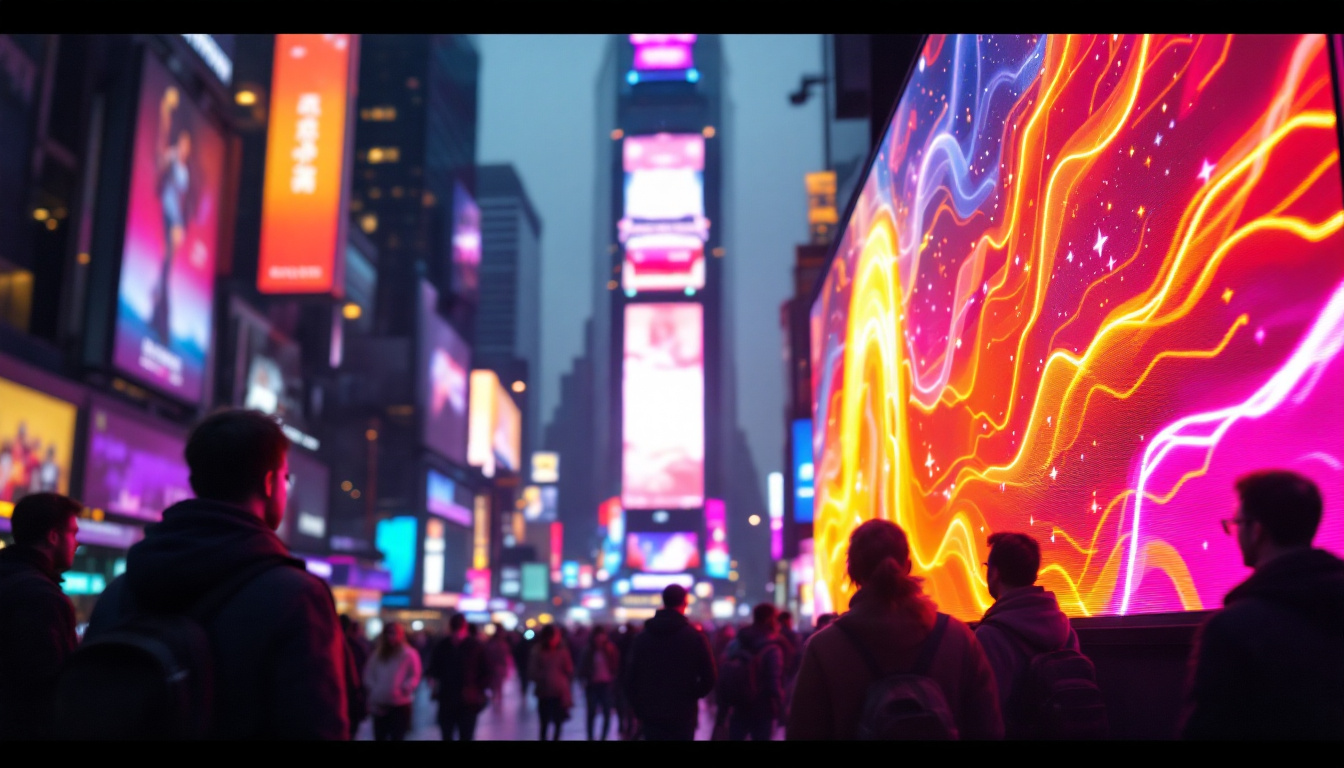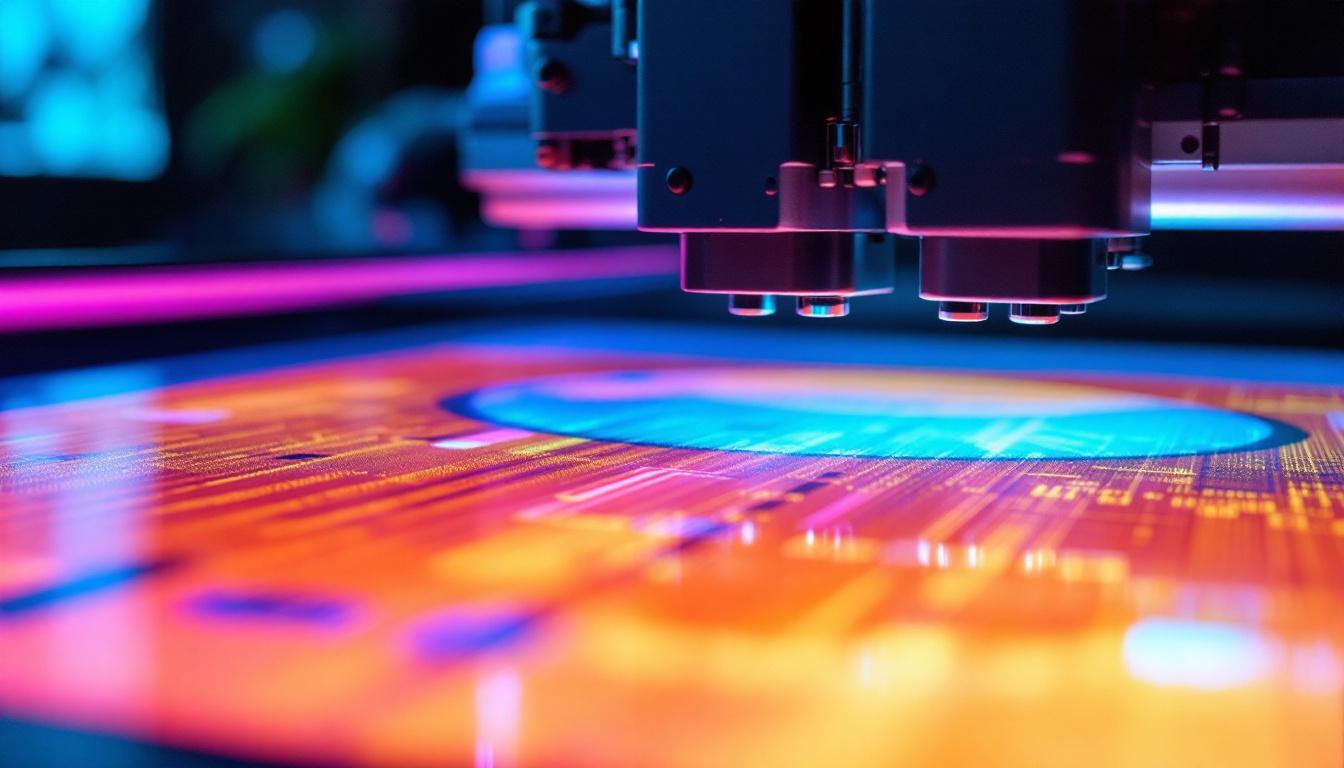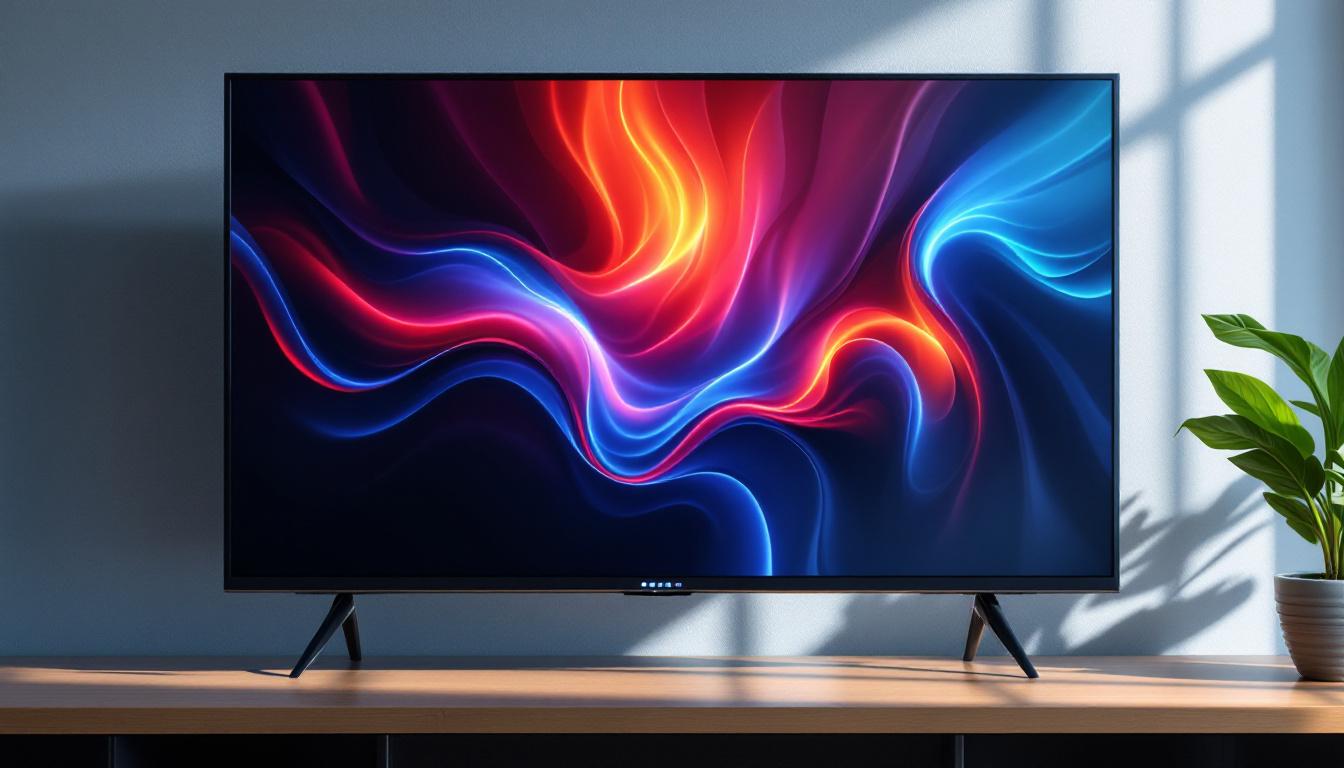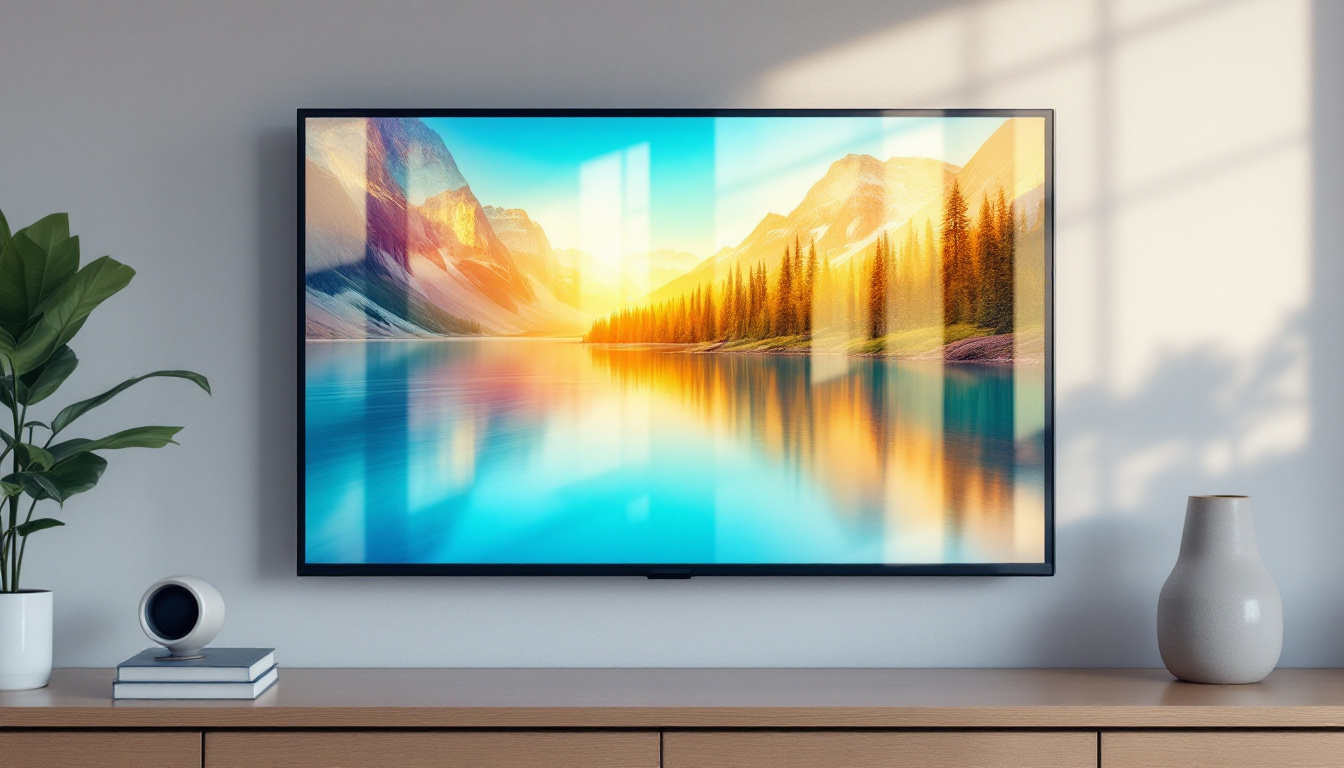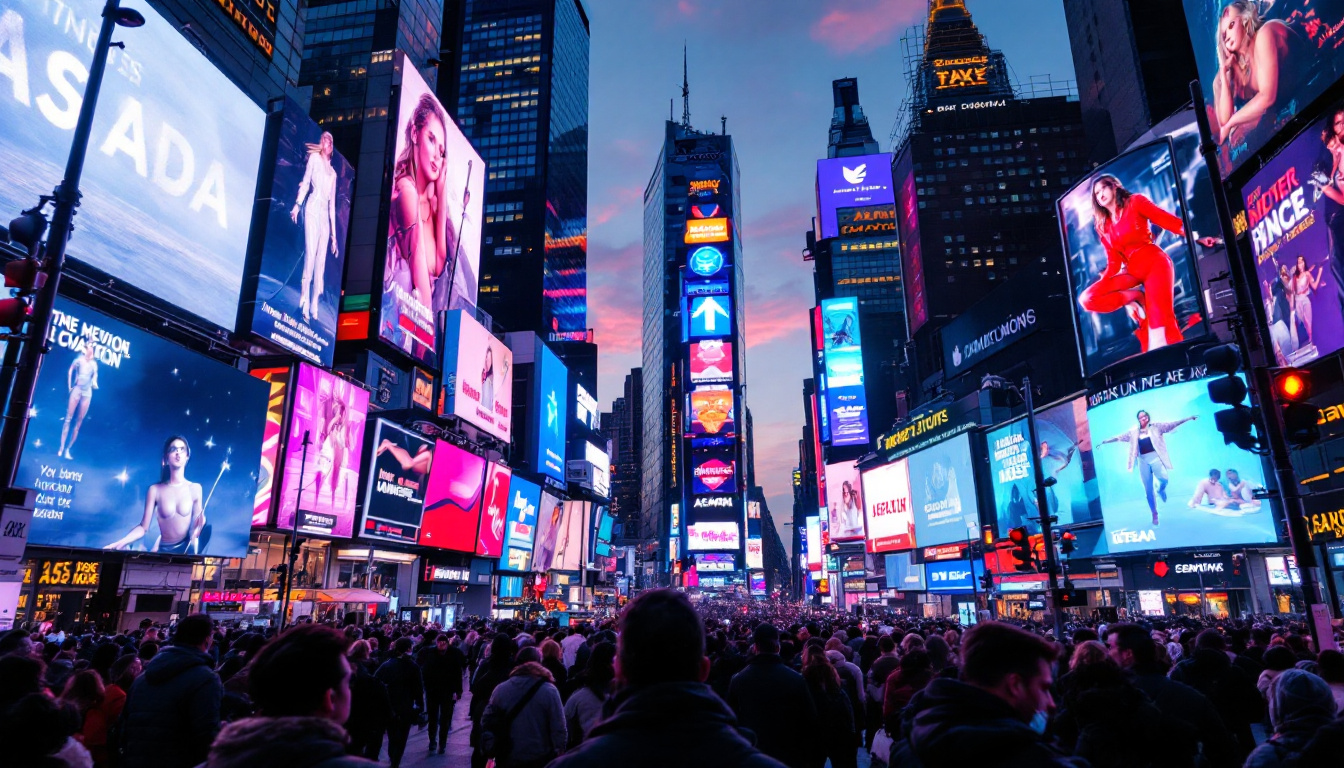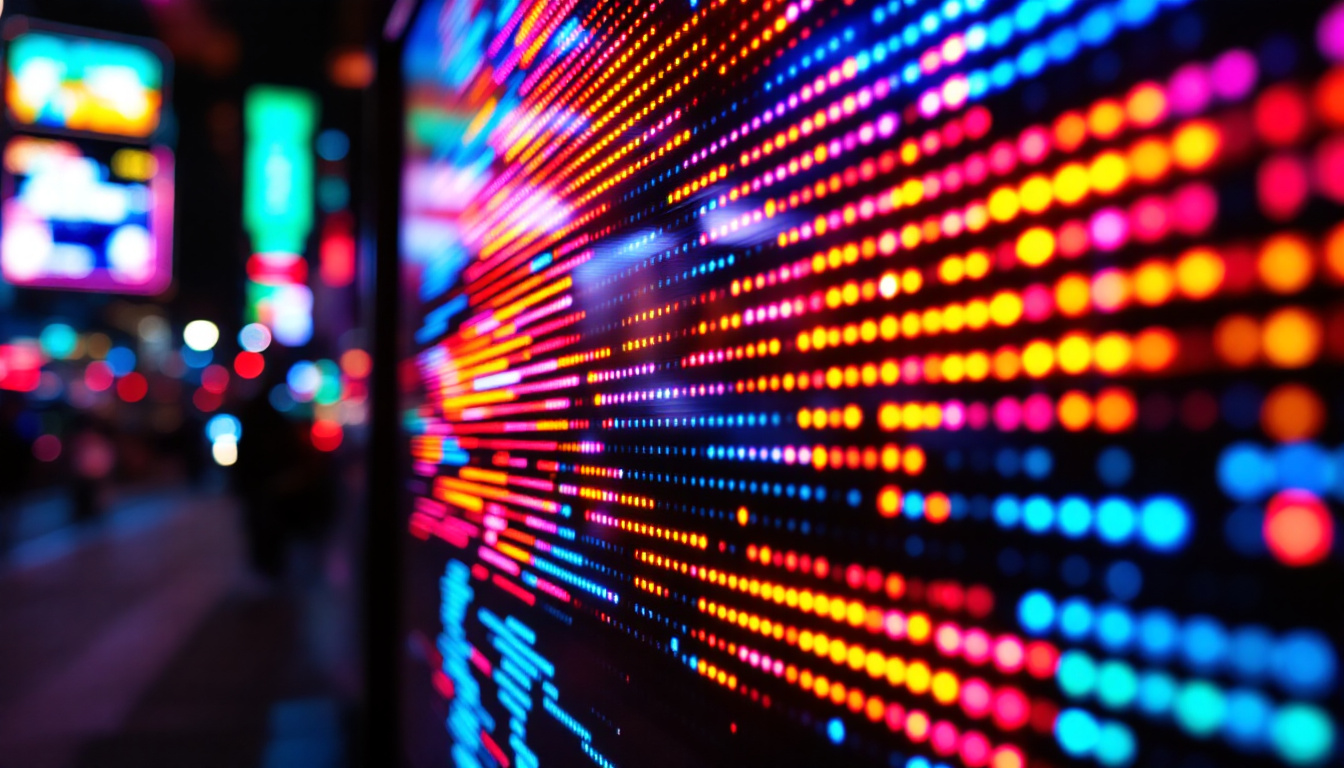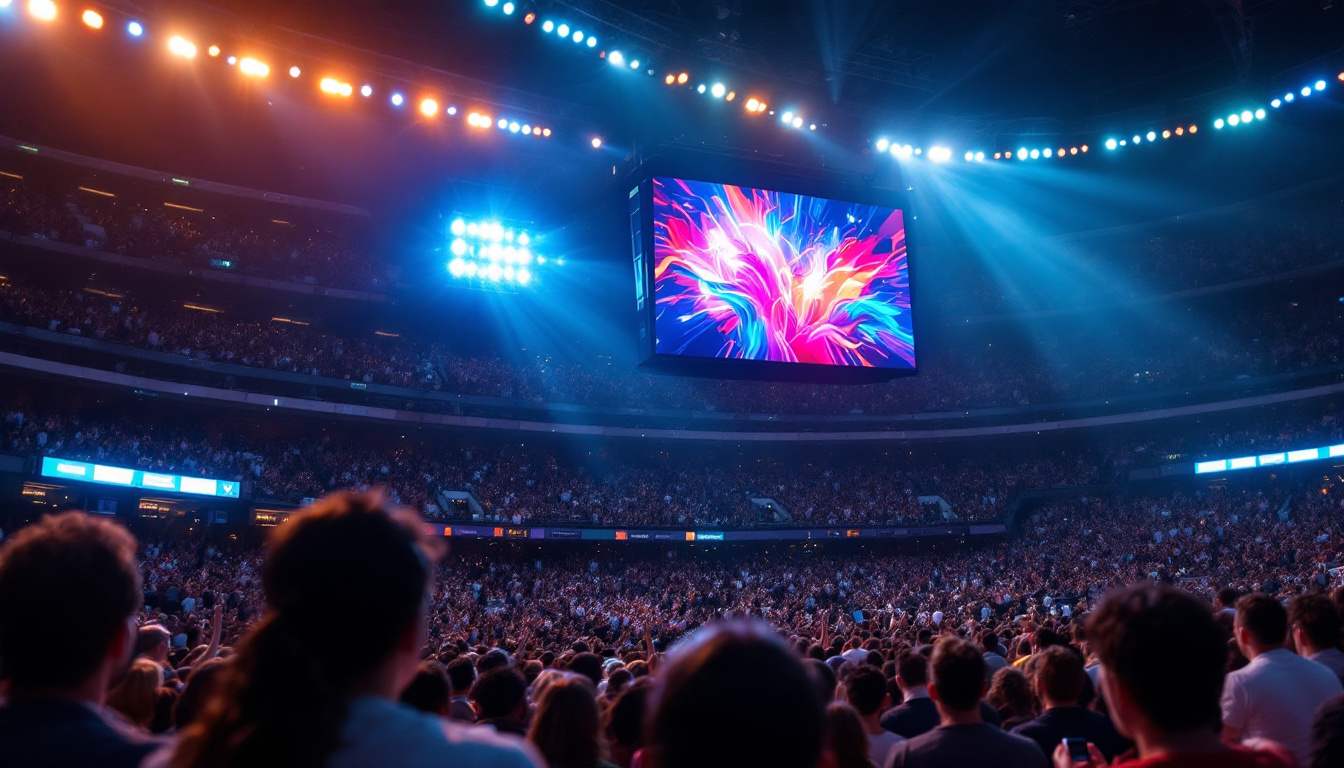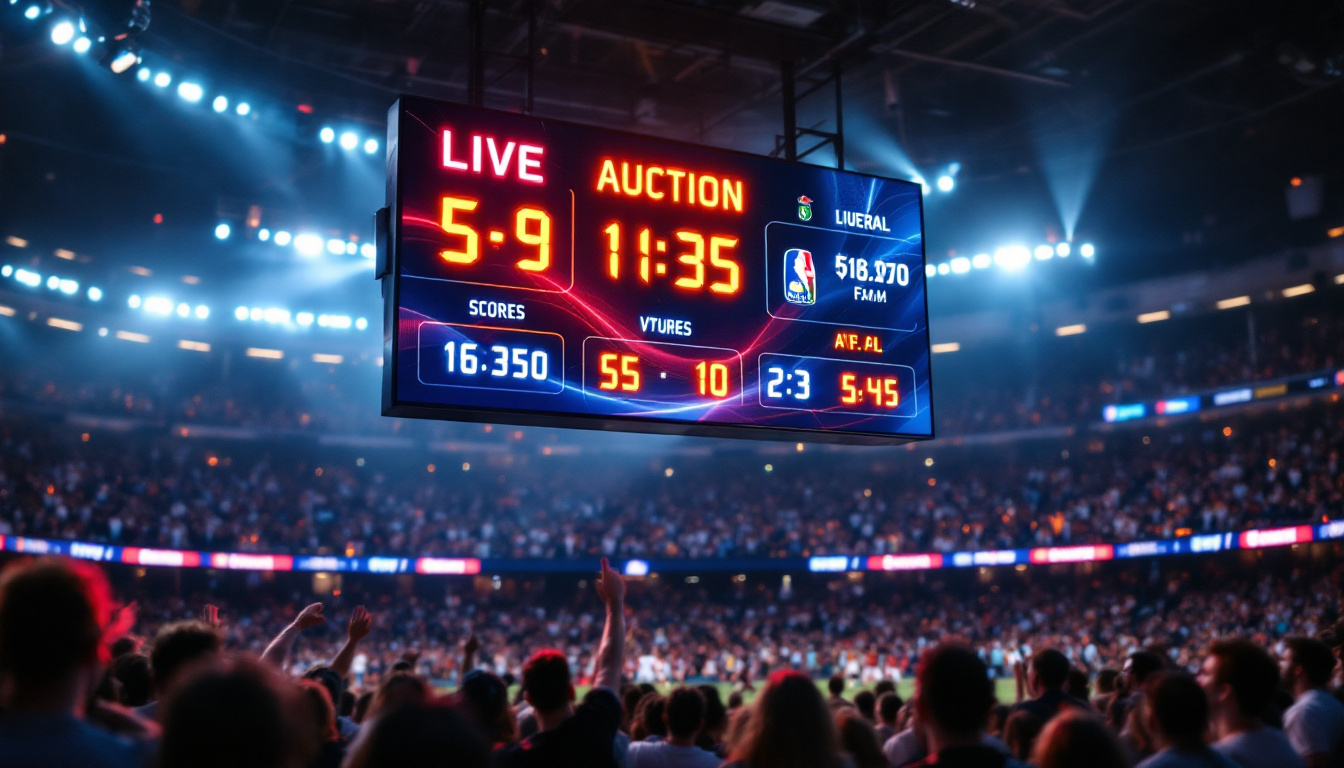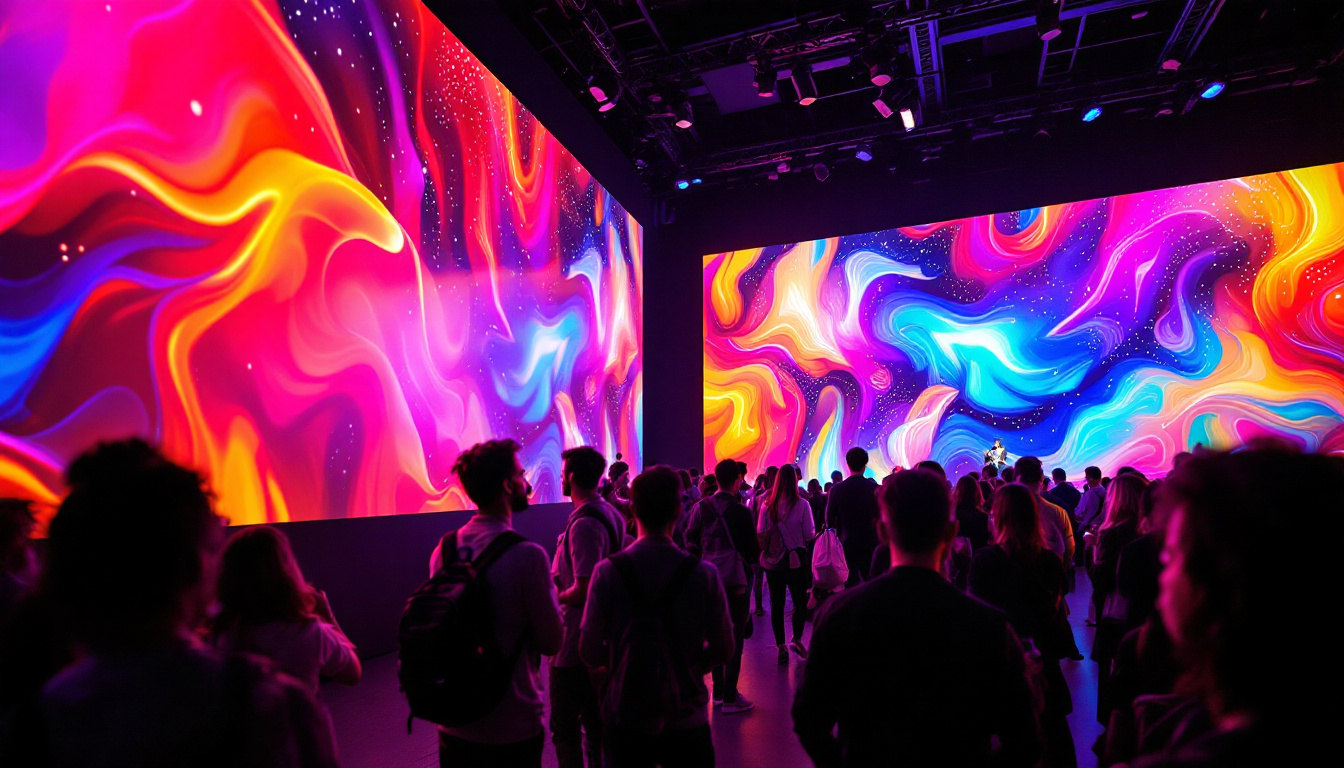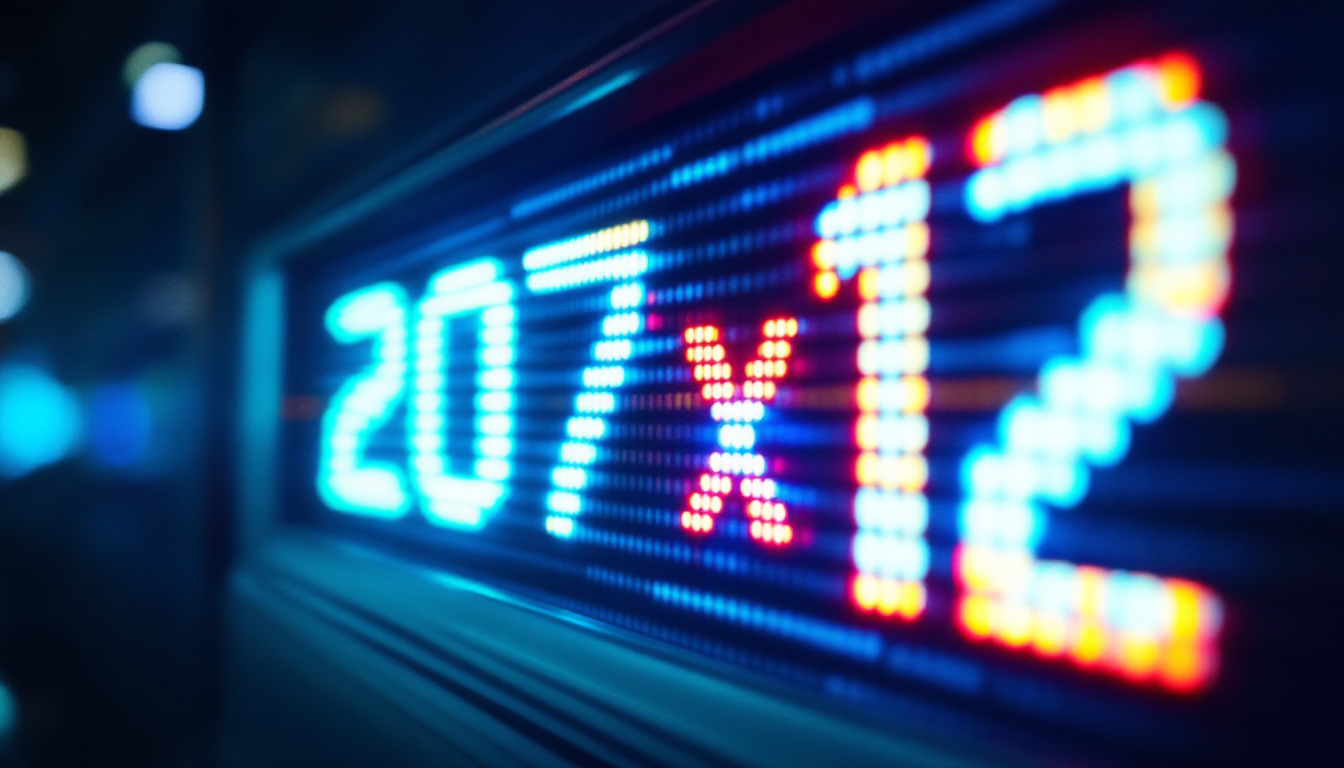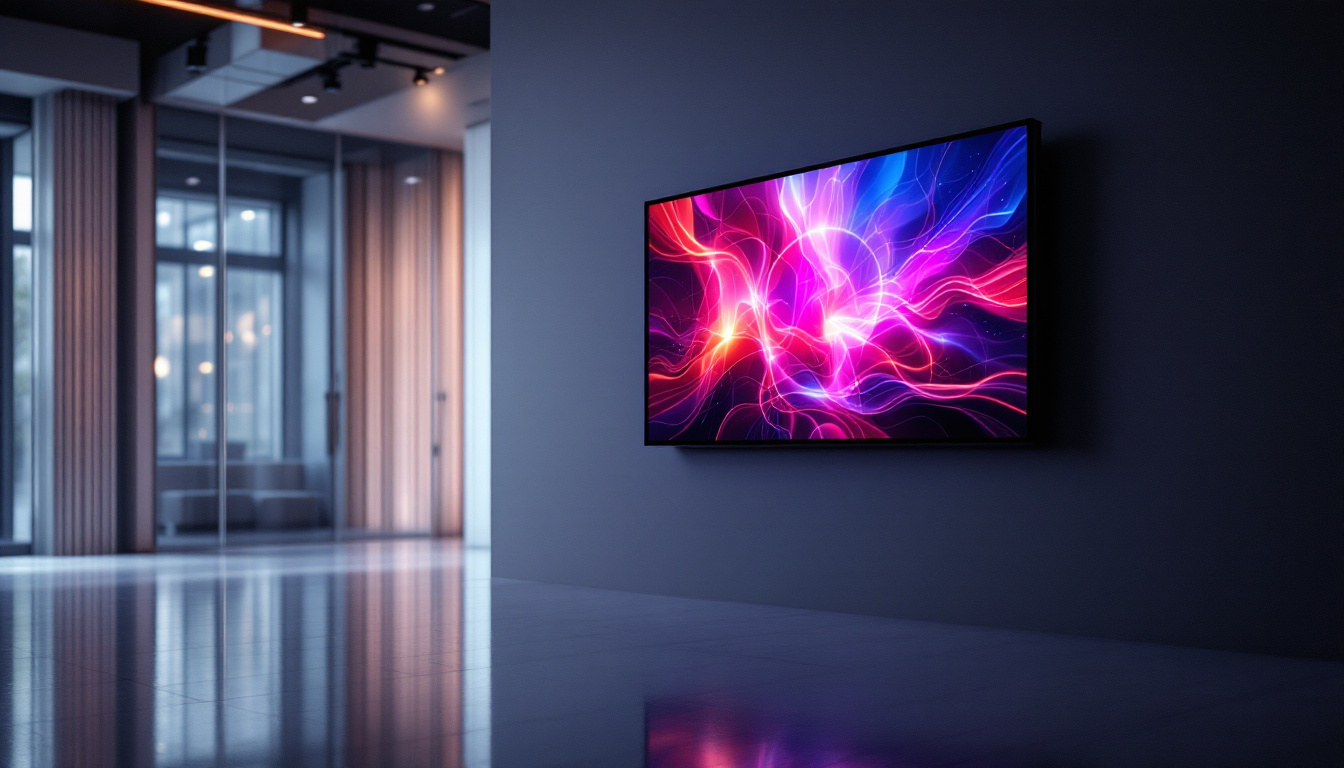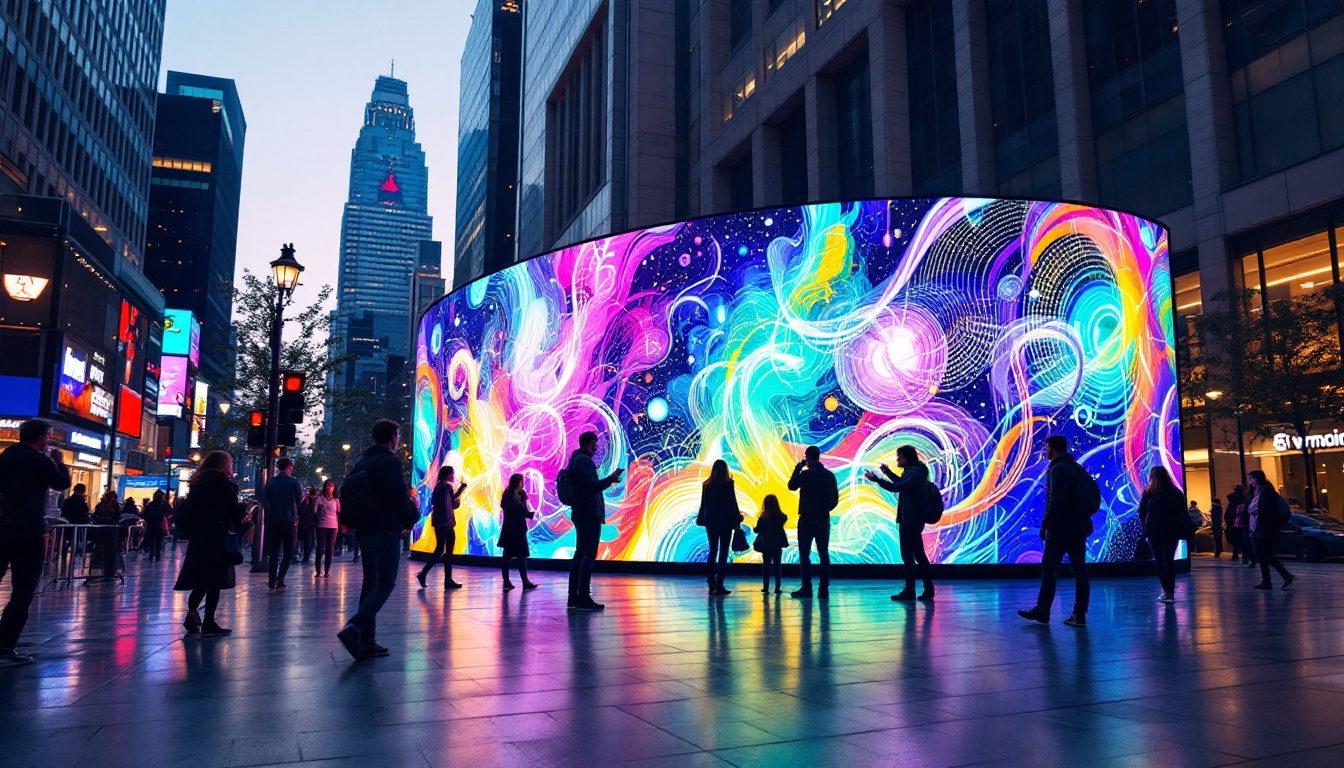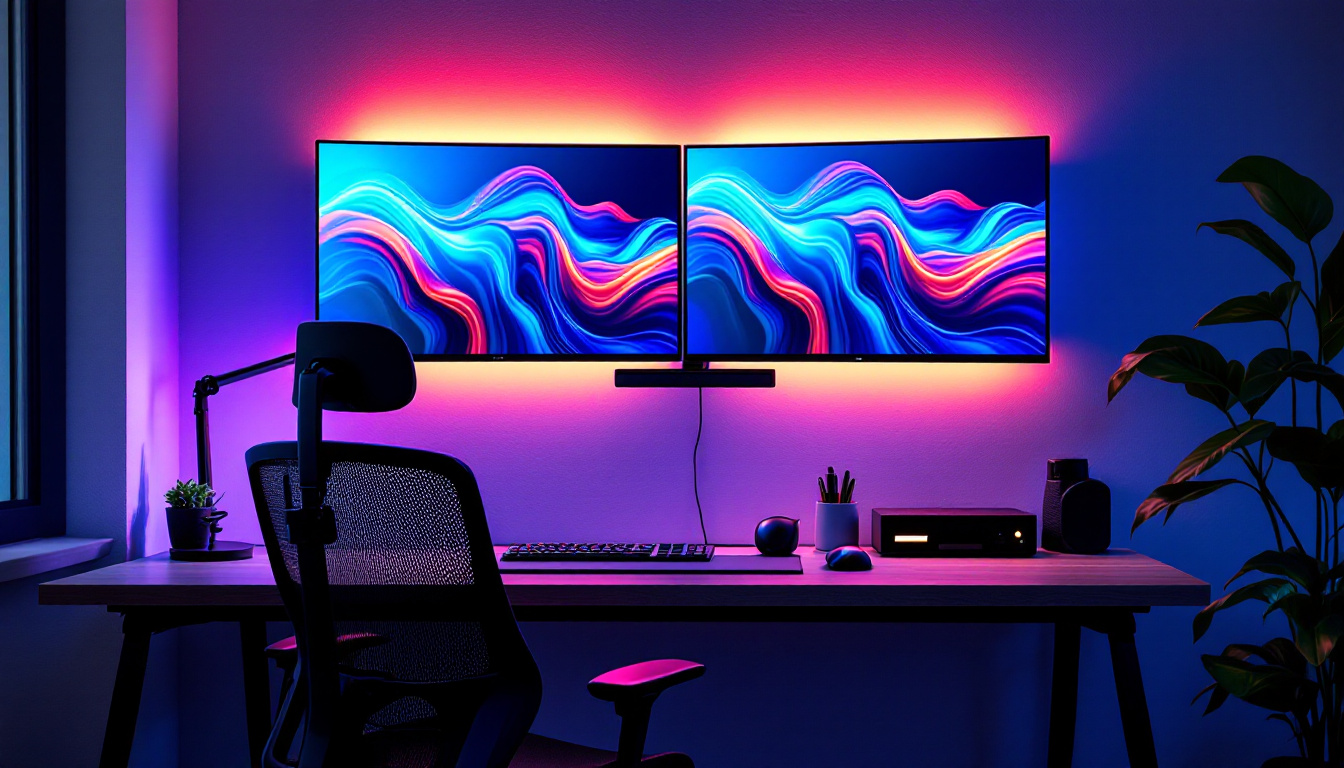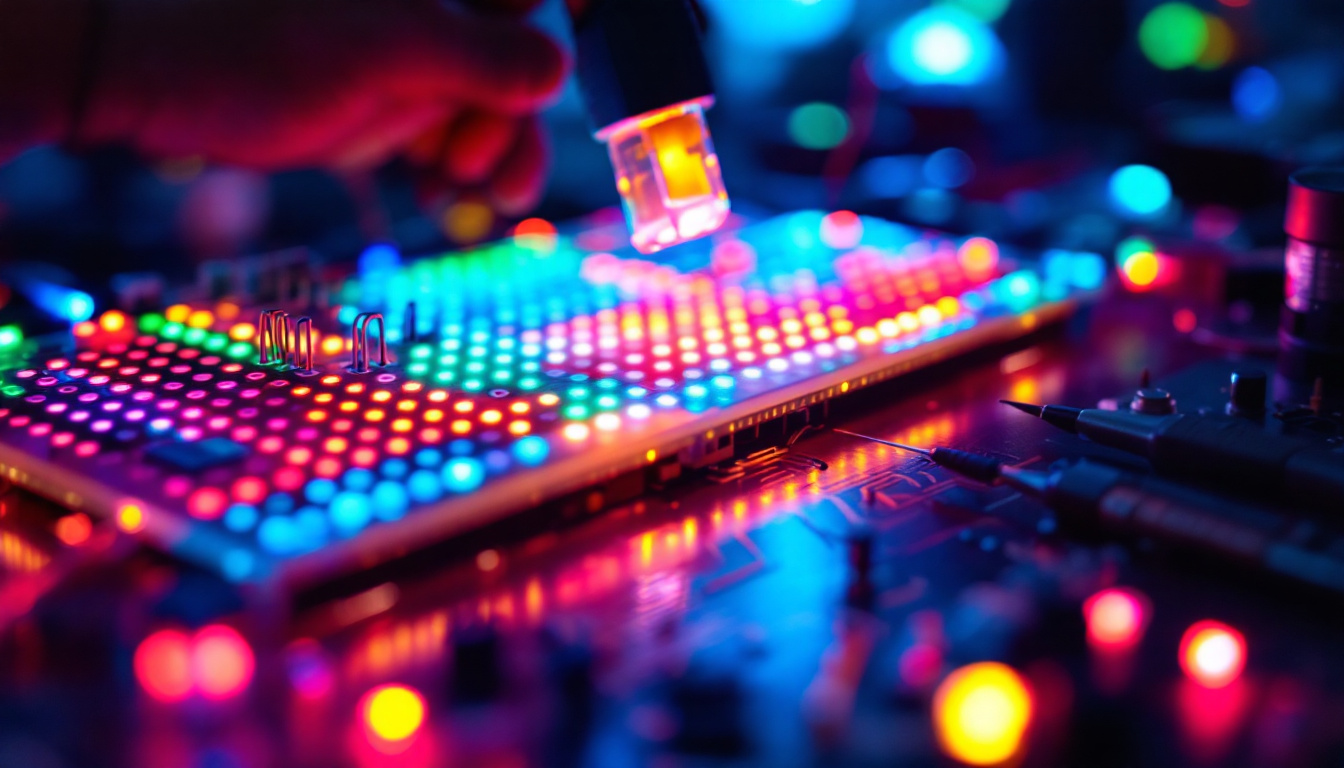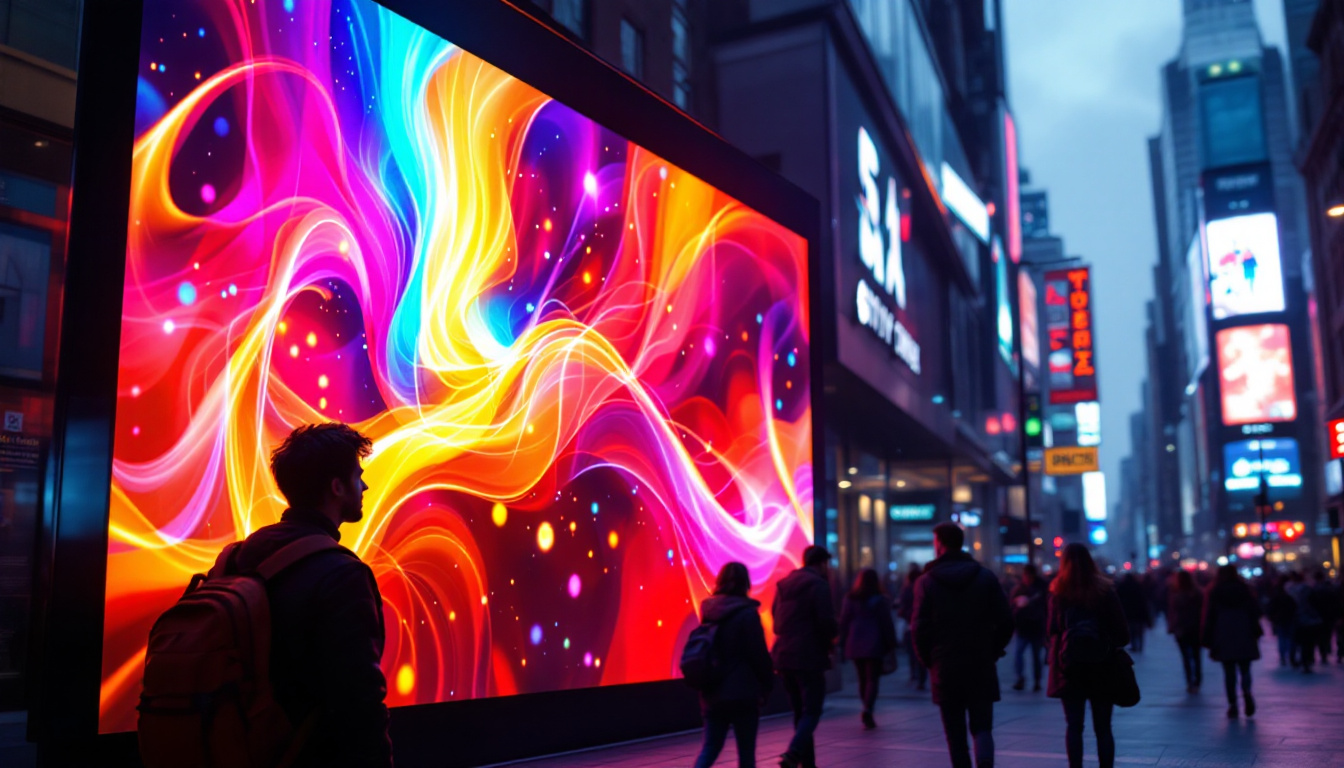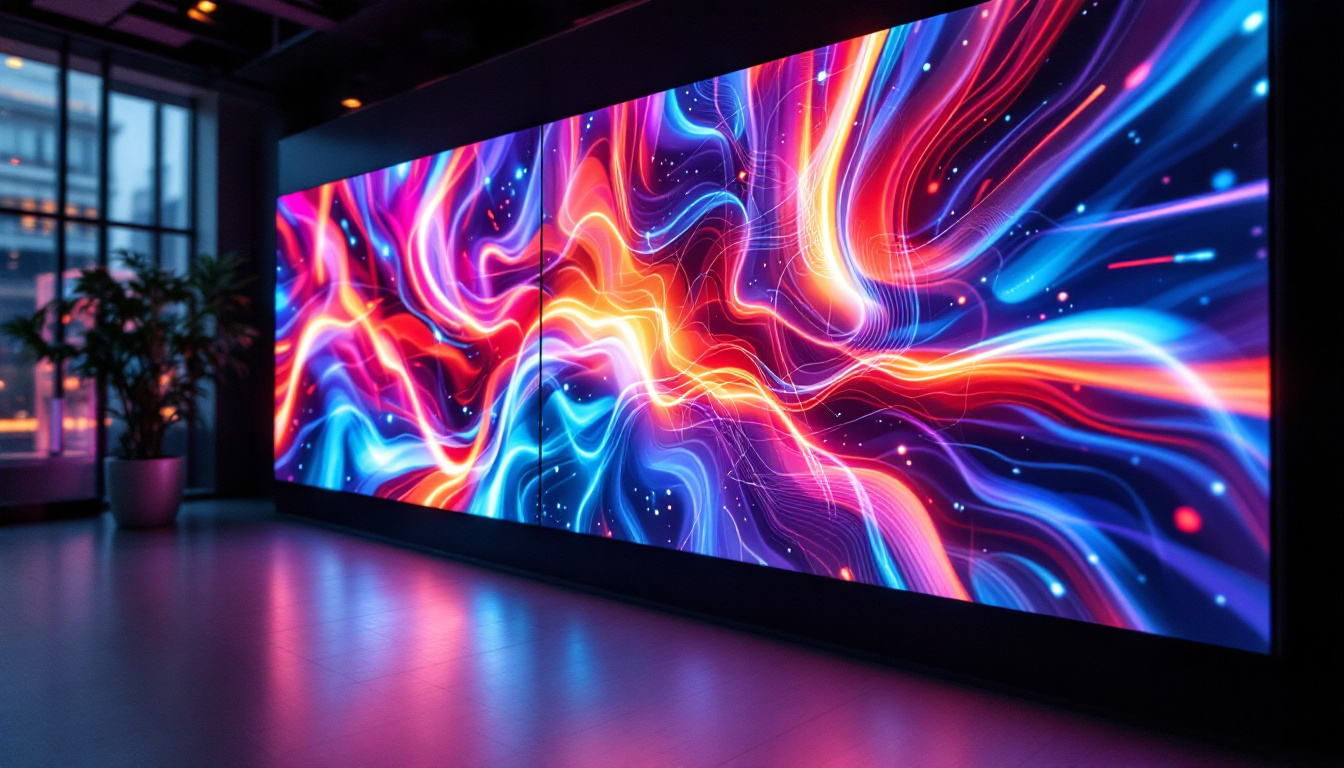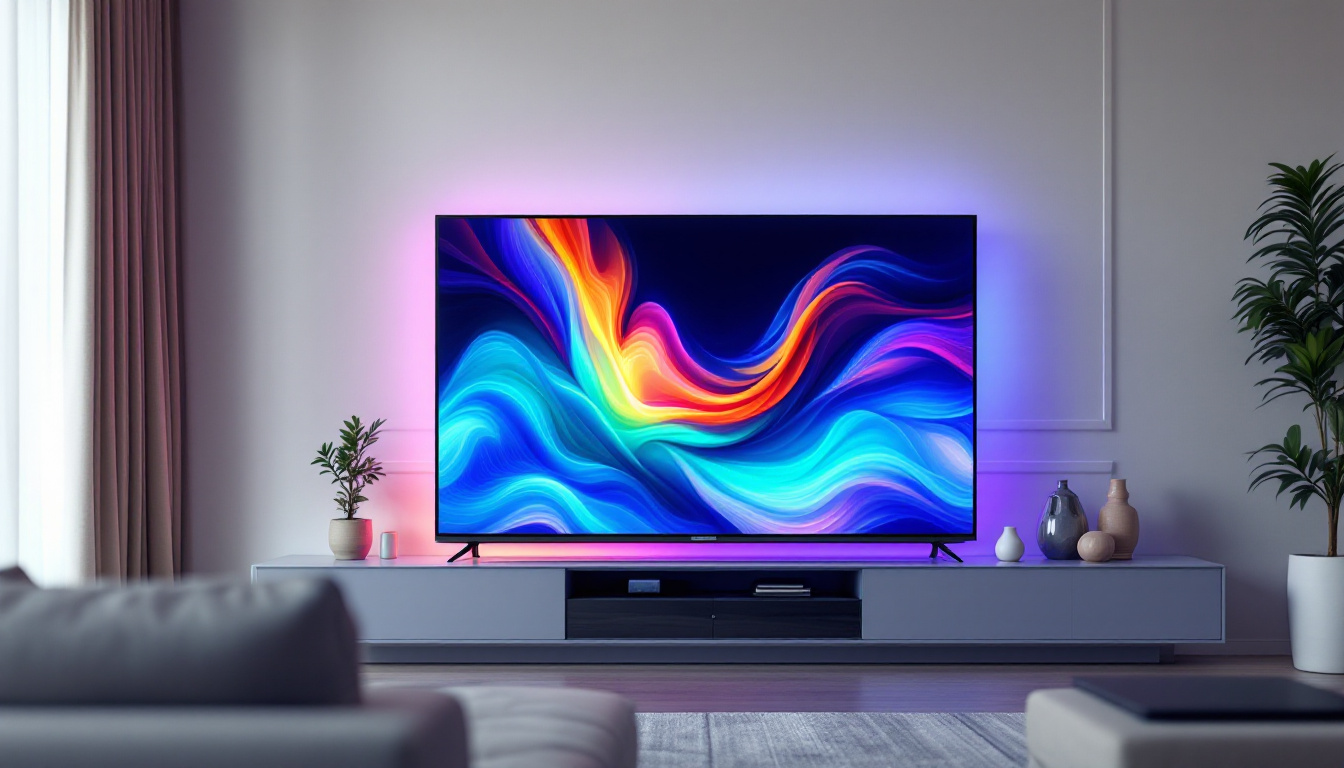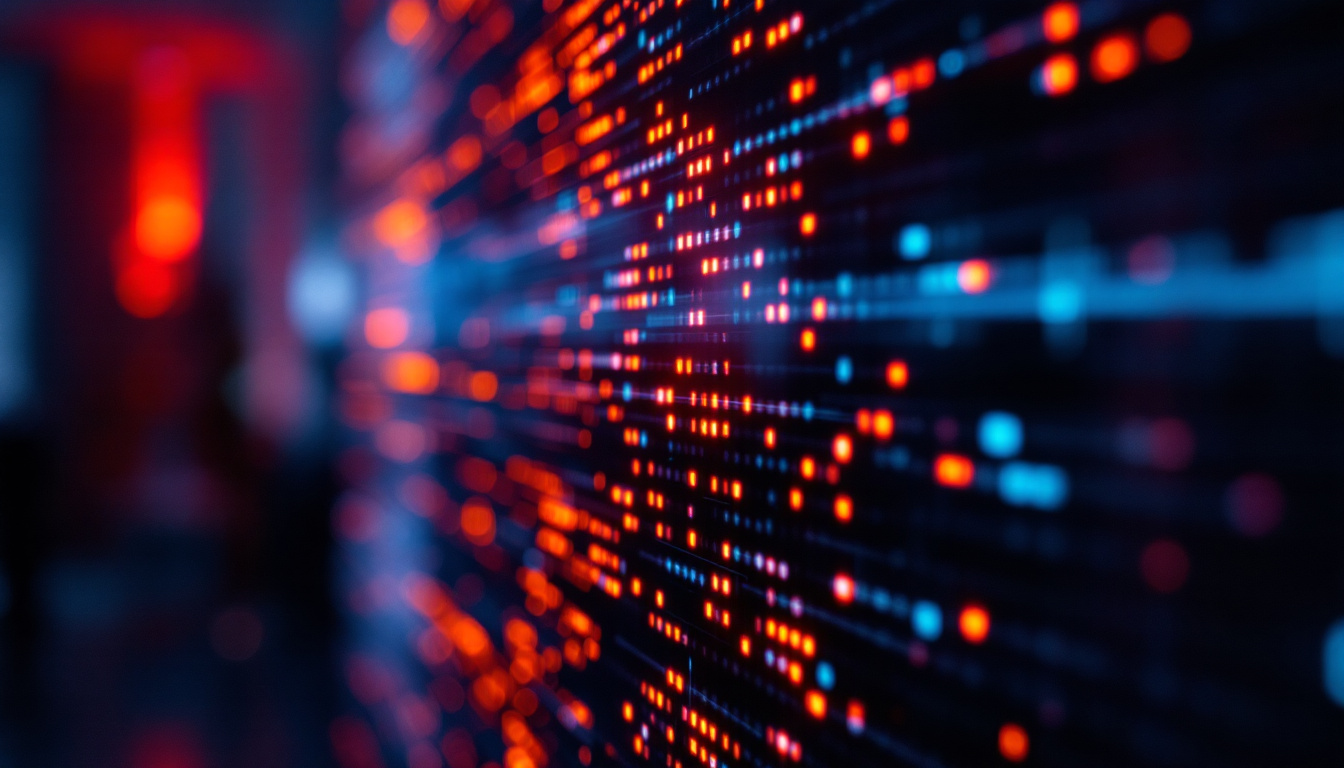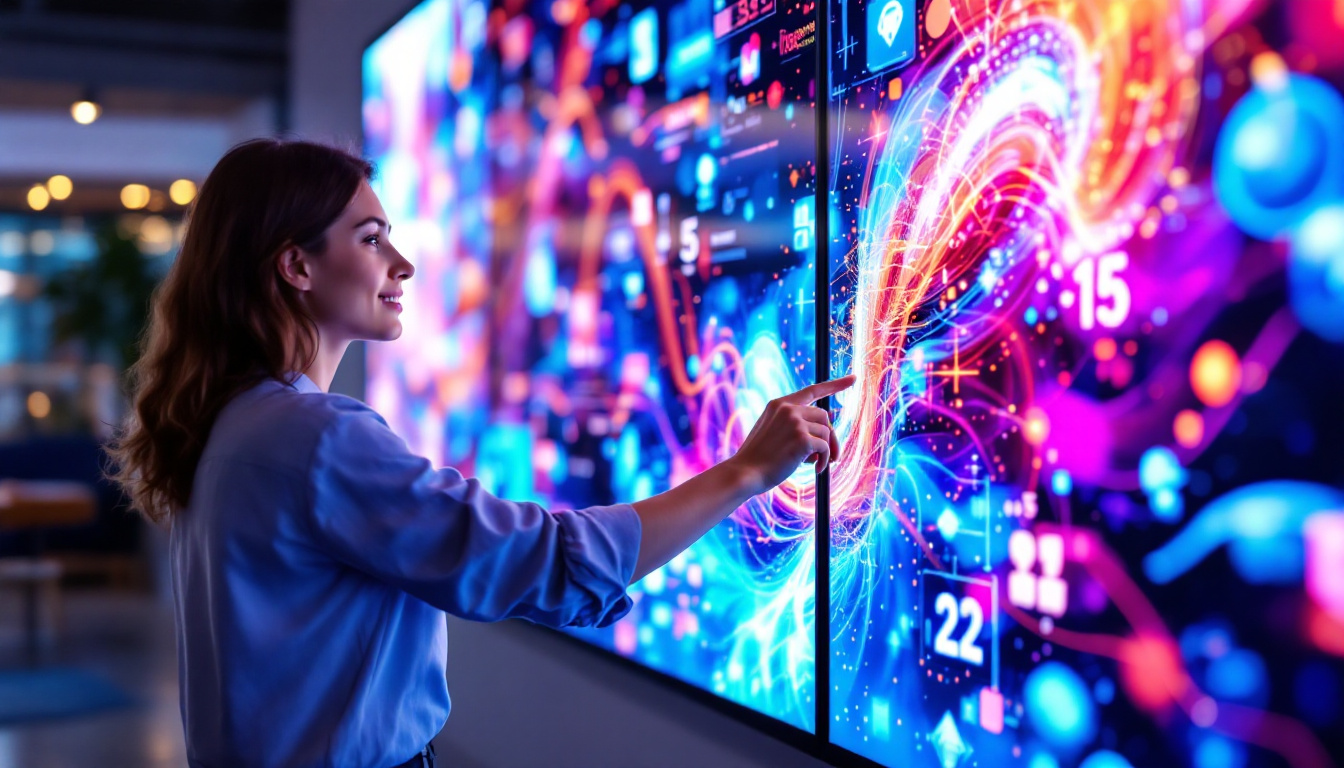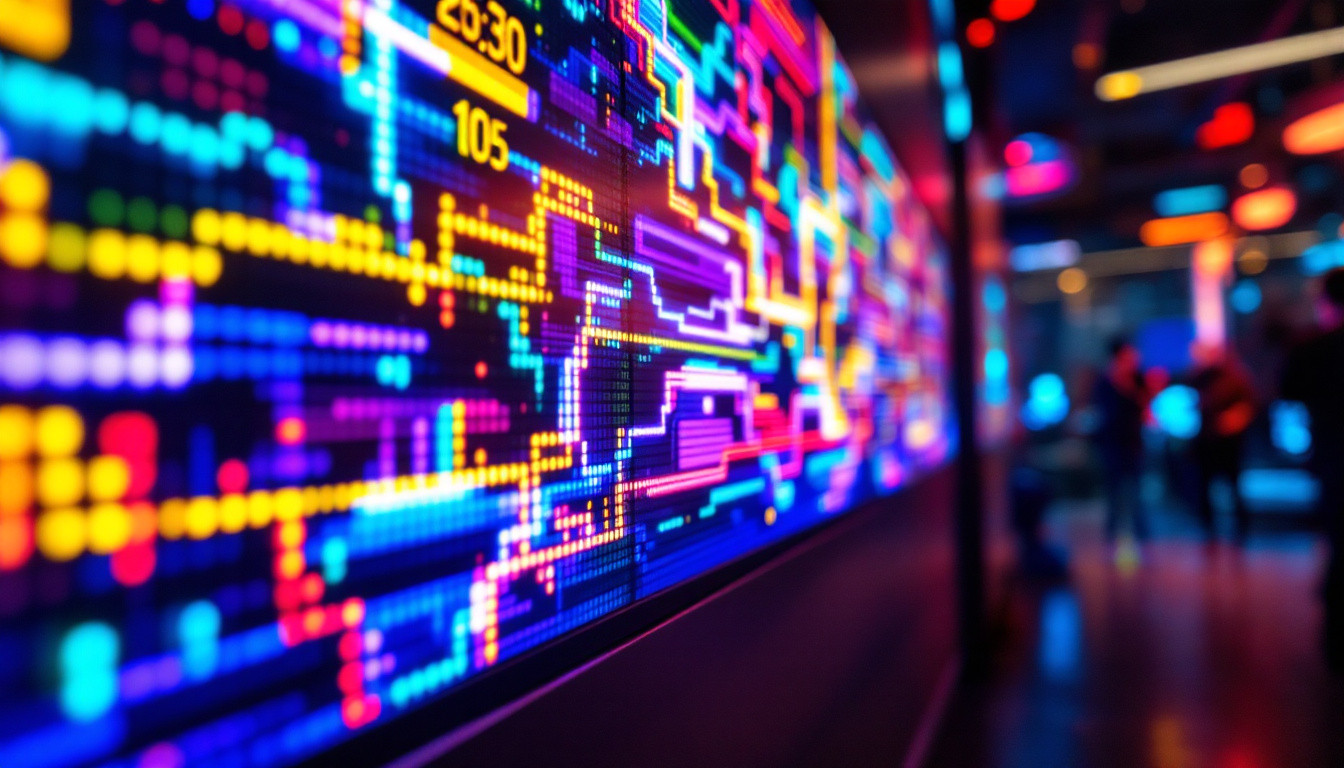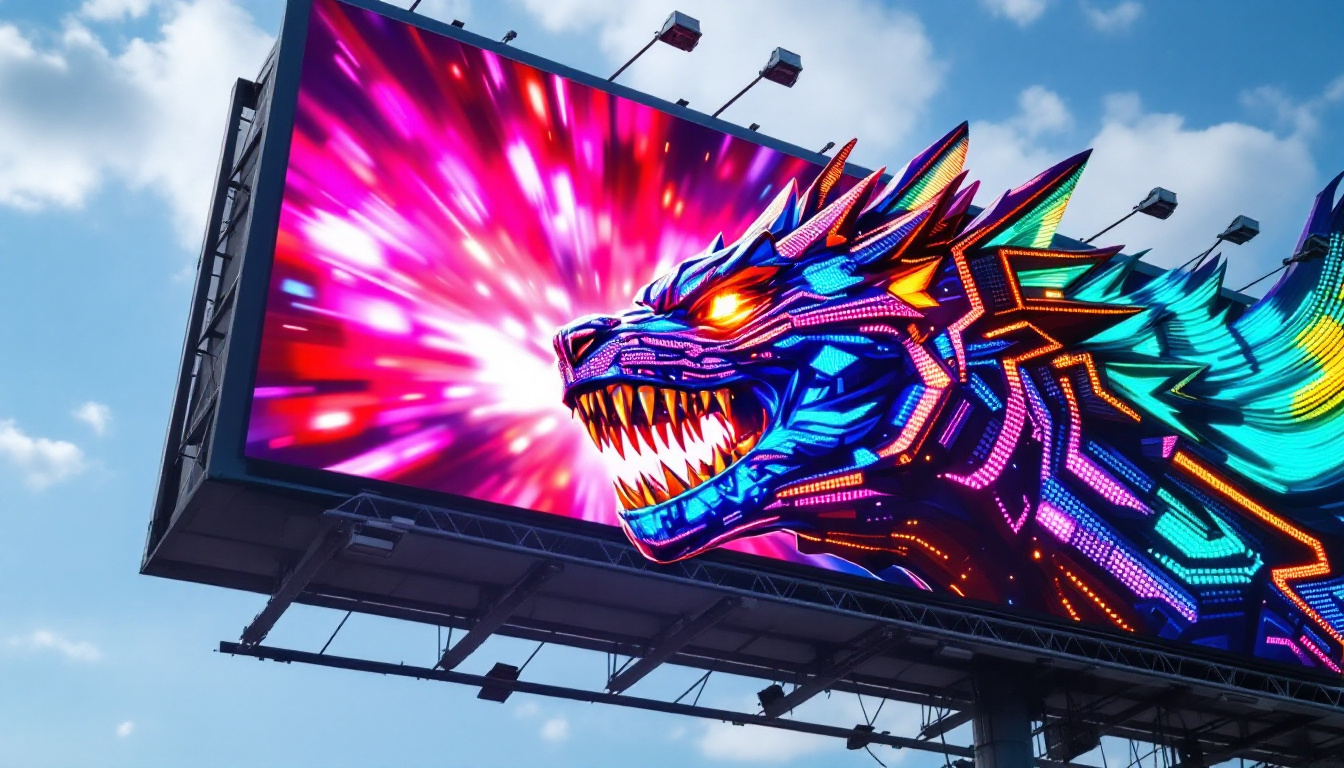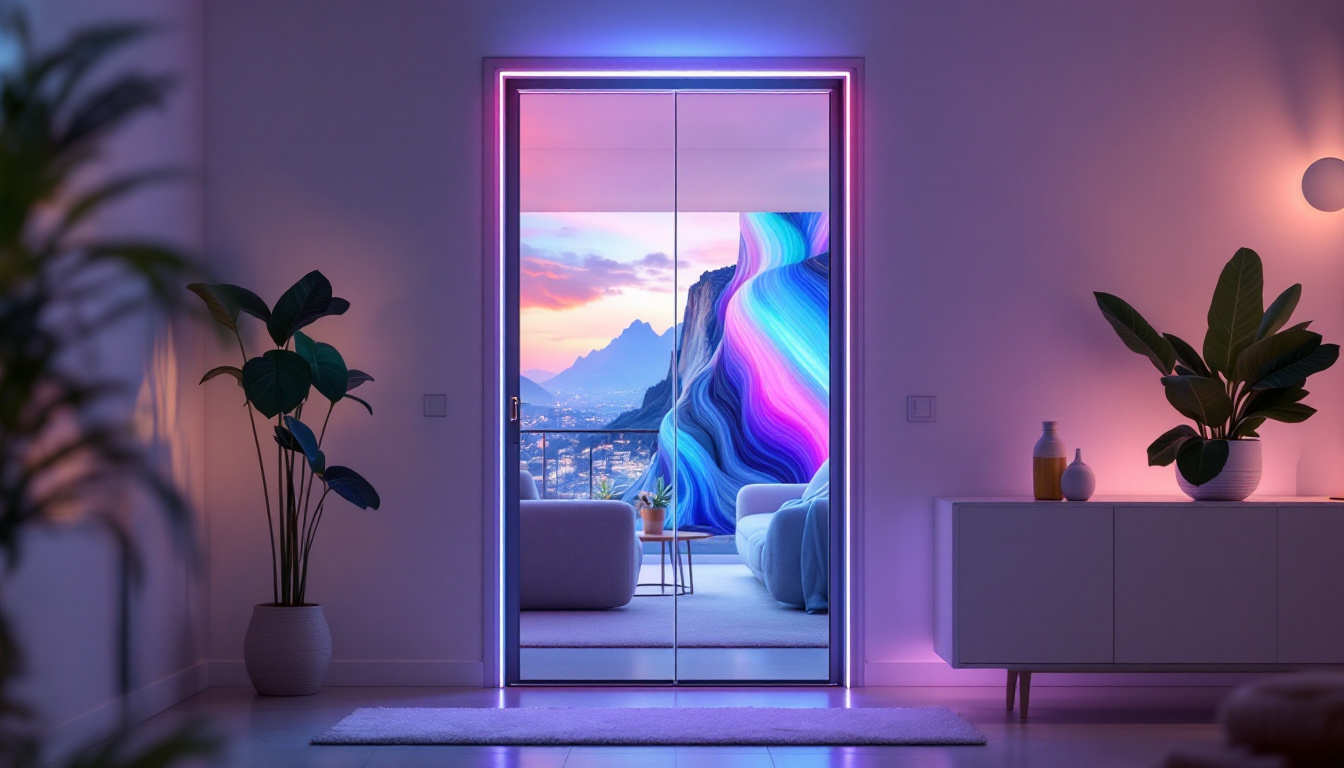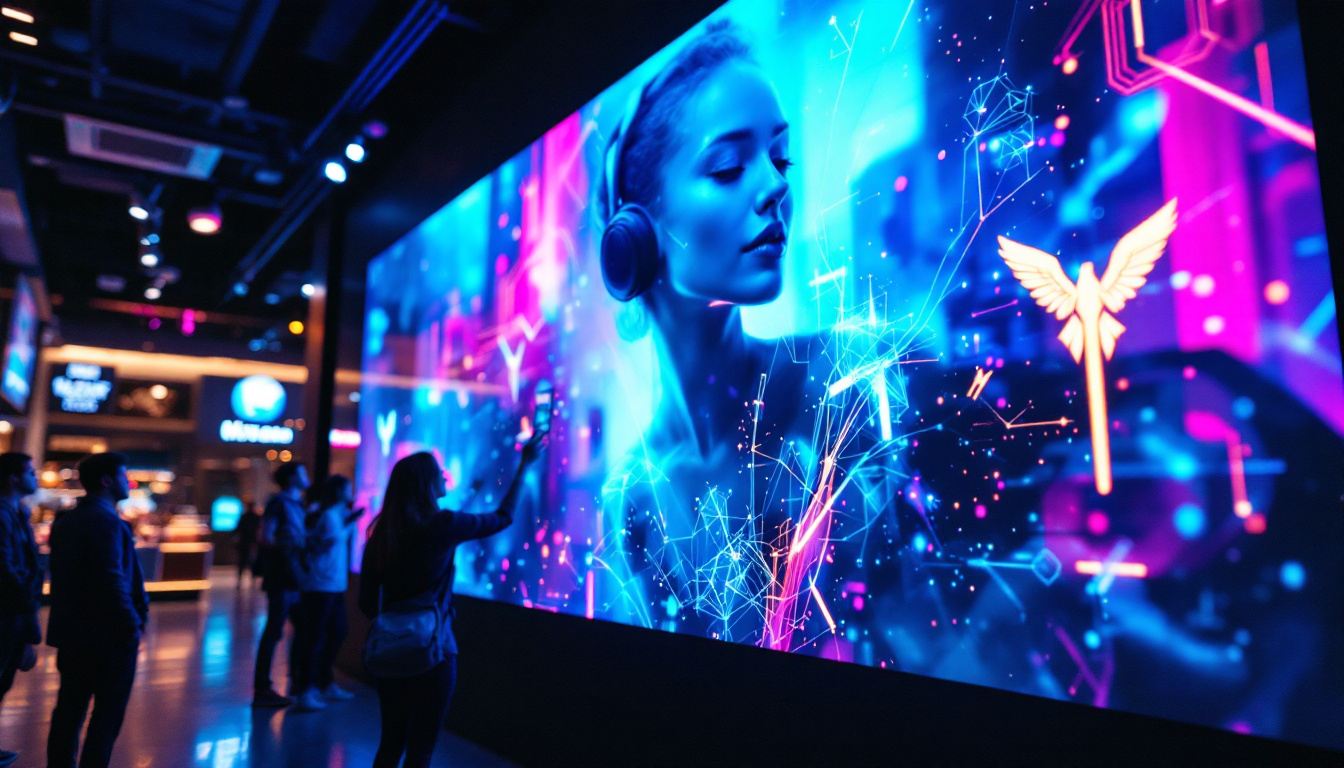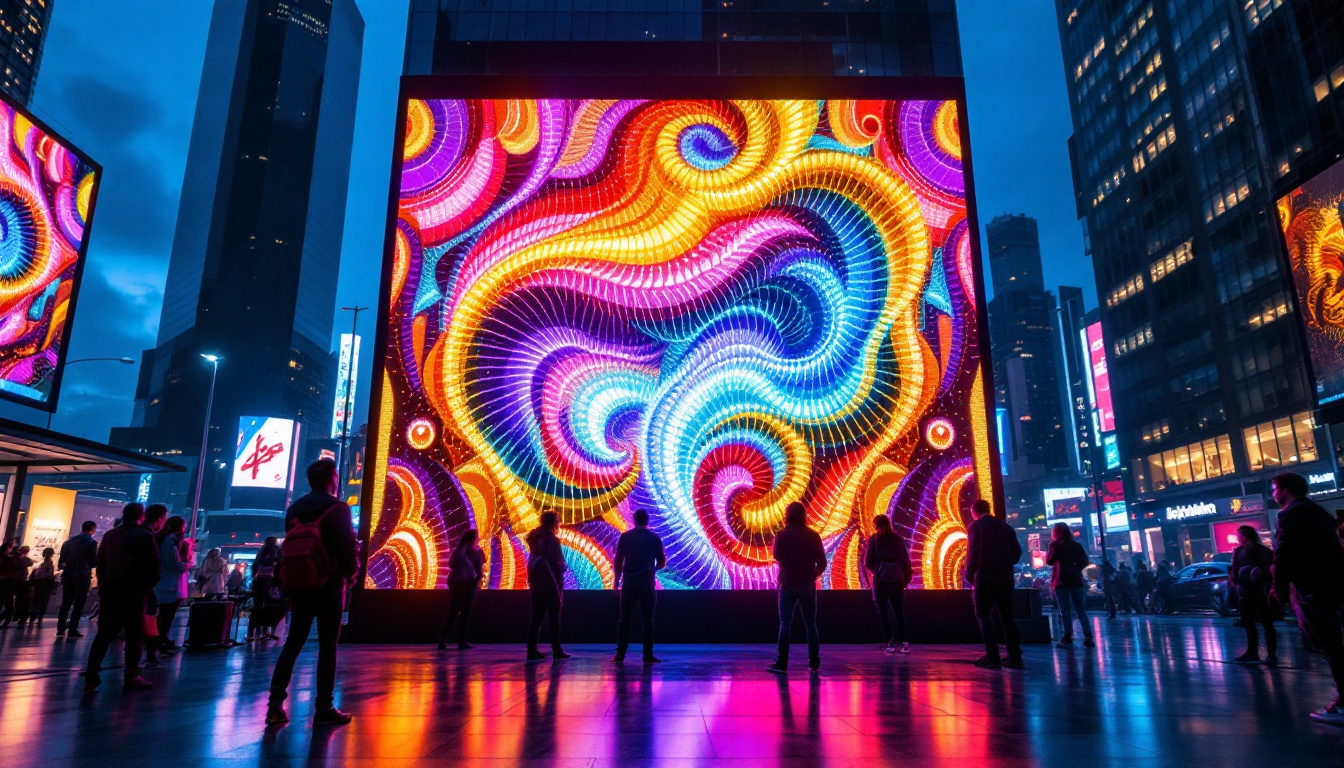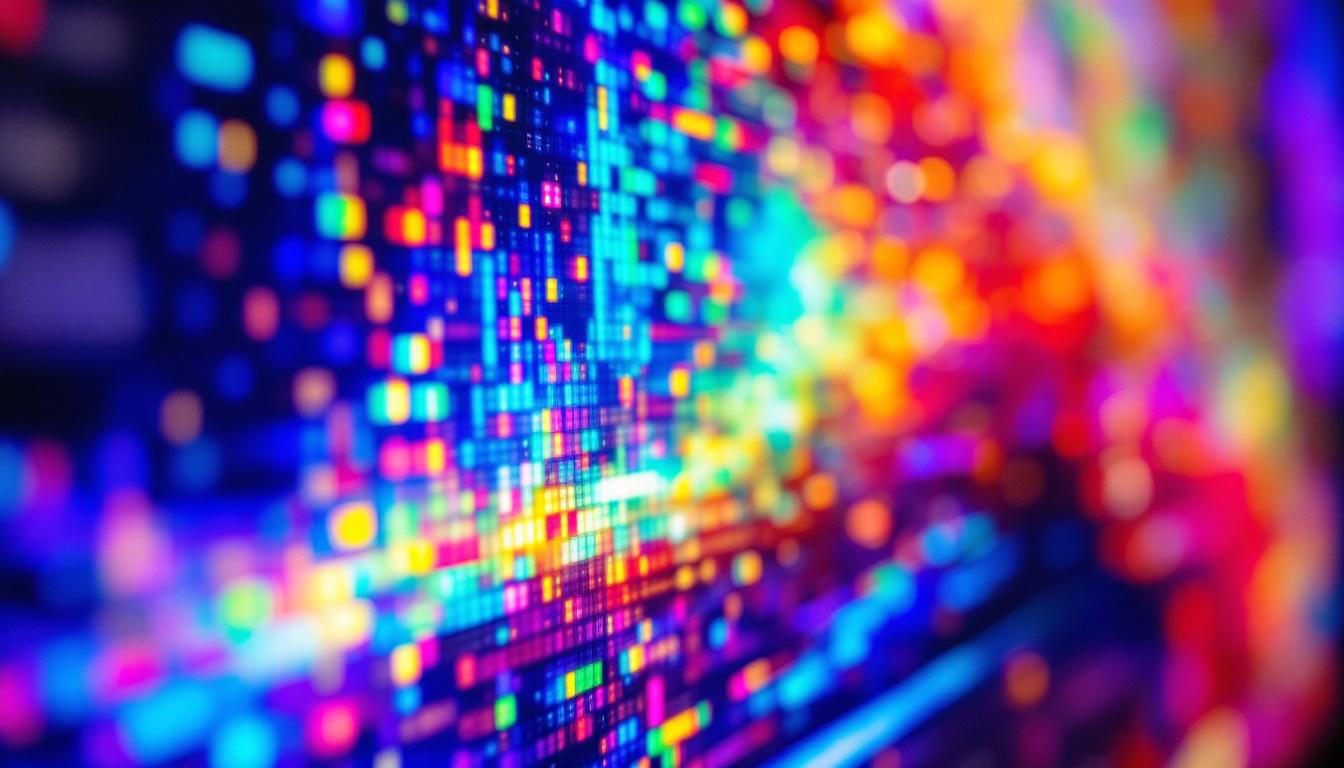Led Display: LED Display Explained
In the modern world of technology, LED displays have become ubiquitous, appearing in everything from smartphones to large-scale advertising billboards. Understanding how these displays work, their advantages, and their various applications can provide valuable insights into their significance in today’s digital landscape.
What is an LED Display?
An LED display is a flat panel display that uses light-emitting diodes (LEDs) as pixels for a video display. Unlike traditional displays that rely on liquid crystal displays (LCDs) or cathode ray tubes (CRTs), LED displays offer superior brightness, color accuracy, and energy efficiency. The technology behind LED displays has evolved significantly, leading to their widespread adoption in various applications, from digital billboards to smartphones. Their ability to produce vibrant colors and deep blacks makes them particularly appealing for both commercial and personal use.
Components of LED Displays
LED displays consist of several key components, including the LED light source, the display panel, and the control system. The LED light source is typically made up of red, green, and blue (RGB) diodes, which combine to produce a full spectrum of colors. The display panel is where these diodes are arranged in a grid format, and the control system manages the input signals and ensures that the correct colors are displayed. Additionally, many LED displays incorporate advanced technologies such as dynamic contrast ratios and refresh rates, which enhance the viewing experience by providing smoother motion and improved clarity during fast-paced scenes.
Types of LED Displays
There are primarily two types of LED displays: direct-view and backlit. Direct-view LED displays use individual LEDs to create images and are commonly used in outdoor advertising and large-scale screens. Backlit LED displays, on the other hand, use LEDs to illuminate an LCD panel from behind, making them suitable for televisions and computer monitors. Furthermore, within these categories, there are variations such as OLED (Organic LED) displays, which offer even greater flexibility and color depth due to their ability to emit light on a pixel-by-pixel basis. This technology allows for thinner screens and improved energy efficiency, making OLED displays a popular choice for high-end televisions and mobile devices. The ongoing advancements in LED technology continue to push the boundaries of display capabilities, leading to innovations like flexible displays and transparent screens that are set to revolutionize the way we interact with visual media.
How LED Displays Work
The operation of LED displays is based on the principles of electroluminescence, where certain materials emit light when an electric current passes through them. In an LED display, this phenomenon occurs in the semiconductor materials that make up the diodes. These diodes are typically made from compounds such as gallium arsenide or gallium phosphide, which are carefully engineered to optimize light output and efficiency. This technology not only allows for bright and vivid displays but also contributes to the longevity and durability of the screens, making them a preferred choice for both indoor and outdoor applications.
Color Production
Color production in LED displays is achieved through the combination of red, green, and blue light. By varying the intensity of each color, a wide range of colors can be produced. This RGB model is fundamental to how digital displays represent images and videos, allowing for vibrant and dynamic visuals. Additionally, advancements in LED technology have introduced variations such as RGBW (red, green, blue, and white) and RGBA (red, green, blue, and alpha for transparency), which enhance color accuracy and brightness. This is particularly beneficial in high-dynamic-range (HDR) content, where the range of colors and contrasts can be more pronounced, providing a more immersive viewing experience.
Pixel Configuration
Each pixel in an LED display is made up of multiple sub-pixels, typically one for each of the RGB colors. The arrangement and density of these pixels determine the resolution of the display. Higher pixel density results in sharper images and better detail, which is crucial for applications requiring high visual fidelity. For instance, in a 4K display, there are approximately 8.3 million pixels, which allows for intricate details to be rendered with clarity. Furthermore, the configuration of pixels can vary, with some displays using a matrix layout while others may employ a more advanced technology like microLED or OLED, which can provide even greater flexibility in design and form factor. These innovations are paving the way for ultra-thin, bendable displays that can be integrated into various environments and applications, from smartphones to large-scale digital billboards.
Advantages of LED Displays
LED displays offer numerous advantages over traditional display technologies, making them a popular choice in various applications. Their benefits include energy efficiency, longevity, and superior image quality.
Energy Efficiency
One of the standout features of LED displays is their energy efficiency. Compared to traditional displays, they consume significantly less power, which not only reduces operational costs but also makes them more environmentally friendly. This efficiency is particularly beneficial for large installations, such as outdoor billboards, where energy consumption can be substantial. Furthermore, many LED displays come equipped with advanced dimming capabilities that allow them to adjust brightness based on ambient light conditions, further optimizing energy use and extending their lifespan.
Longevity and Durability
LED displays are known for their long lifespan, often lasting tens of thousands of hours. This durability is due to the robust nature of LEDs, which are less prone to damage from shock and vibration compared to other display technologies. As a result, LED displays are ideal for both indoor and outdoor applications, where they may be exposed to harsh environmental conditions. Additionally, their resistance to temperature fluctuations and humidity makes them suitable for a wide range of settings, from sports arenas to retail environments, ensuring that they maintain performance and reliability over time.
Superior Image Quality
The image quality produced by LED displays is often superior to that of traditional displays. They provide brighter images with higher contrast ratios, making them easier to view in various lighting conditions. Additionally, the color accuracy and vibrancy of LED displays enhance the overall viewing experience, whether for entertainment, advertising, or information dissemination. The rapid response time of LEDs also contributes to smoother motion rendering, which is particularly advantageous for video content and dynamic graphics. This capability allows for a more immersive experience, captivating audiences in settings such as concerts, exhibitions, and sporting events, where visual impact is paramount.
Applications of LED Displays
LED displays are versatile and can be found in a wide range of applications across different industries. Their adaptability makes them suitable for everything from commercial advertising to personal use.
Advertising and Marketing
One of the most common applications of LED displays is in advertising and marketing. Large LED billboards can be found in city centers, shopping malls, and sports arenas, capturing the attention of passersby with dynamic content. These displays can showcase advertisements, promotions, and event information, making them an effective tool for businesses to reach their target audience. The ability to change content quickly allows advertisers to tailor their messages based on time of day, audience demographics, or even current events, maximizing engagement and effectiveness. Moreover, with the integration of smart technology, these displays can analyze viewer interactions and adjust content in real-time, further enhancing their impact.
Entertainment and Events
In the entertainment industry, LED displays are used extensively for concerts, festivals, and sporting events. They provide large, vibrant screens that enhance the audience’s experience, allowing for close-up views of performances and real-time information. The ability to display high-definition video content makes LED displays a staple in modern event production. Beyond just visuals, these displays can also incorporate interactive elements, such as live social media feeds or audience polls, creating a more immersive experience. Additionally, the flexibility of LED technology allows for creative stage designs, where screens can be shaped and positioned in various configurations to complement the overall aesthetic of the event.
Information Displays
LED displays are also utilized for information dissemination in various settings, including transportation hubs, educational institutions, and corporate environments. digital signage, such as flight information displays at airports or schedule boards in train stations, relies on LED technology to provide real-time updates to the public. In educational settings, LED displays can serve as interactive learning tools, displaying announcements, schedules, and educational content in a visually engaging manner. Furthermore, corporate environments are increasingly adopting LED displays for internal communication, using them to highlight achievements, share important messages, or even display live data analytics, fostering a more informed and connected workplace culture.
Future of LED Displays
The future of LED displays looks promising, with ongoing advancements in technology leading to even more innovative applications. As the demand for high-quality visual content continues to grow, so does the potential for LED displays to evolve.
Advancements in Technology
Recent advancements in LED technology, such as microLED and OLED, are paving the way for even more sophisticated displays. MicroLED technology, which uses tiny individual LEDs for each pixel, offers the potential for higher resolutions and improved color accuracy. OLED, or organic LED, displays provide deeper blacks and greater contrast, enhancing the overall viewing experience.
Integration with Smart Technology
As smart technology becomes increasingly prevalent, LED displays are expected to integrate more seamlessly with other devices and platforms. This integration could lead to interactive displays that respond to user input or adapt content based on environmental factors. Such advancements could revolutionize how information is presented and consumed.
Conclusion
LED displays have transformed the way information is conveyed and experienced in the modern world. With their energy efficiency, durability, and superior image quality, they have become an essential component in various applications, from advertising to entertainment and beyond. As technology continues to advance, the potential for LED displays to innovate and enhance our visual experiences is limitless.
Understanding the intricacies of LED displays not only highlights their importance in current technology but also underscores their role in shaping the future of visual communication. With ongoing advancements, LED displays will undoubtedly continue to evolve, providing even more exciting possibilities for industries and consumers alike.
Discover LumenMatrix’s Innovative LED Display Solutions
Ready to elevate your visual experience with the latest in LED display technology? Look no further than LumenMatrix, a pioneer in crafting LED display modules that bring your brand to life and captivate your audience. Whether you’re interested in Indoor LED Wall Displays, Outdoor LED Wall Displays, or specialized solutions like Vehicle LED Displays and LED Sports Displays, LumenMatrix has a solution tailored to your needs. Embrace the future of visual communication and check out LumenMatrix LED Display Solutions today to see how we can help you make a lasting impression with clarity and impact.

